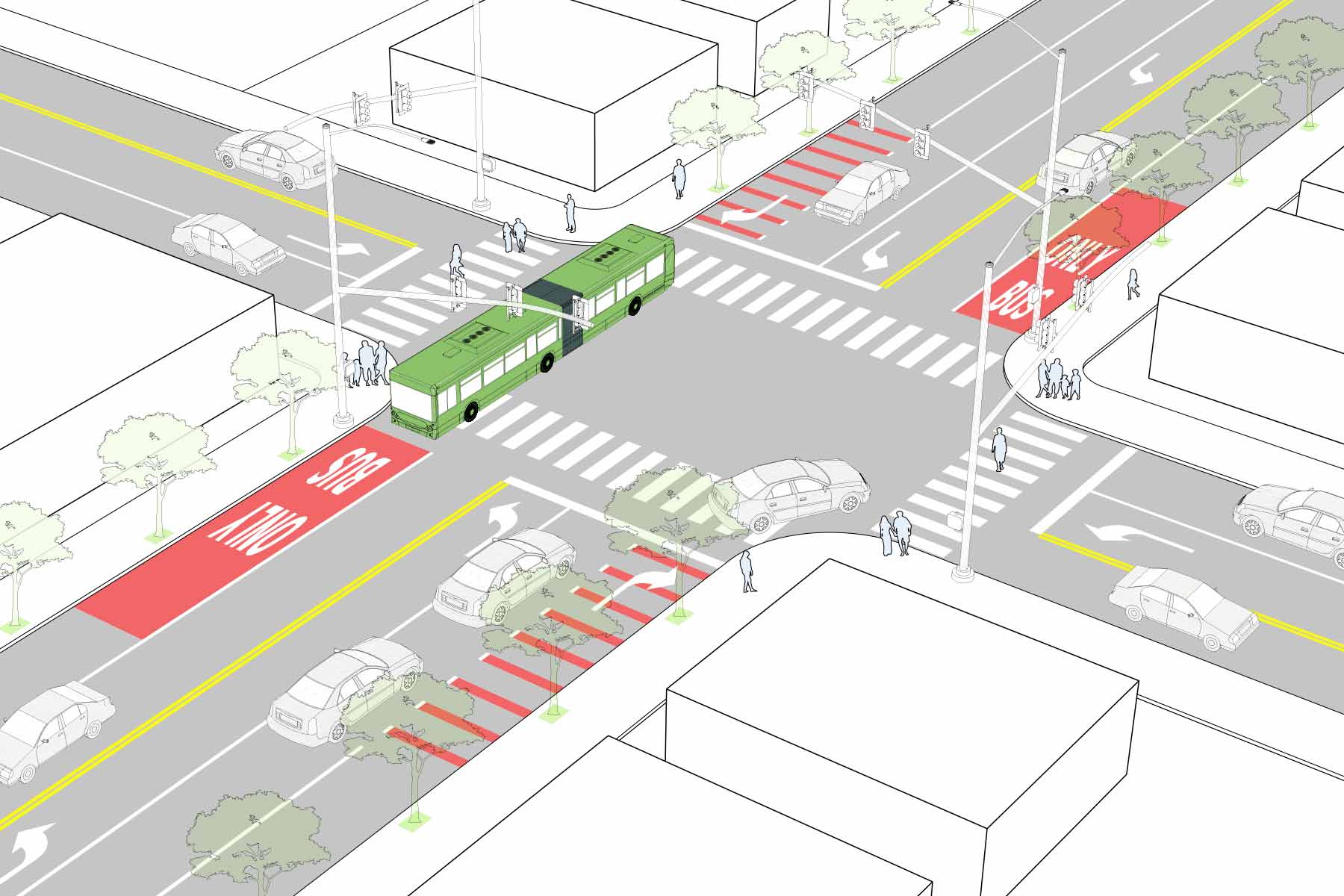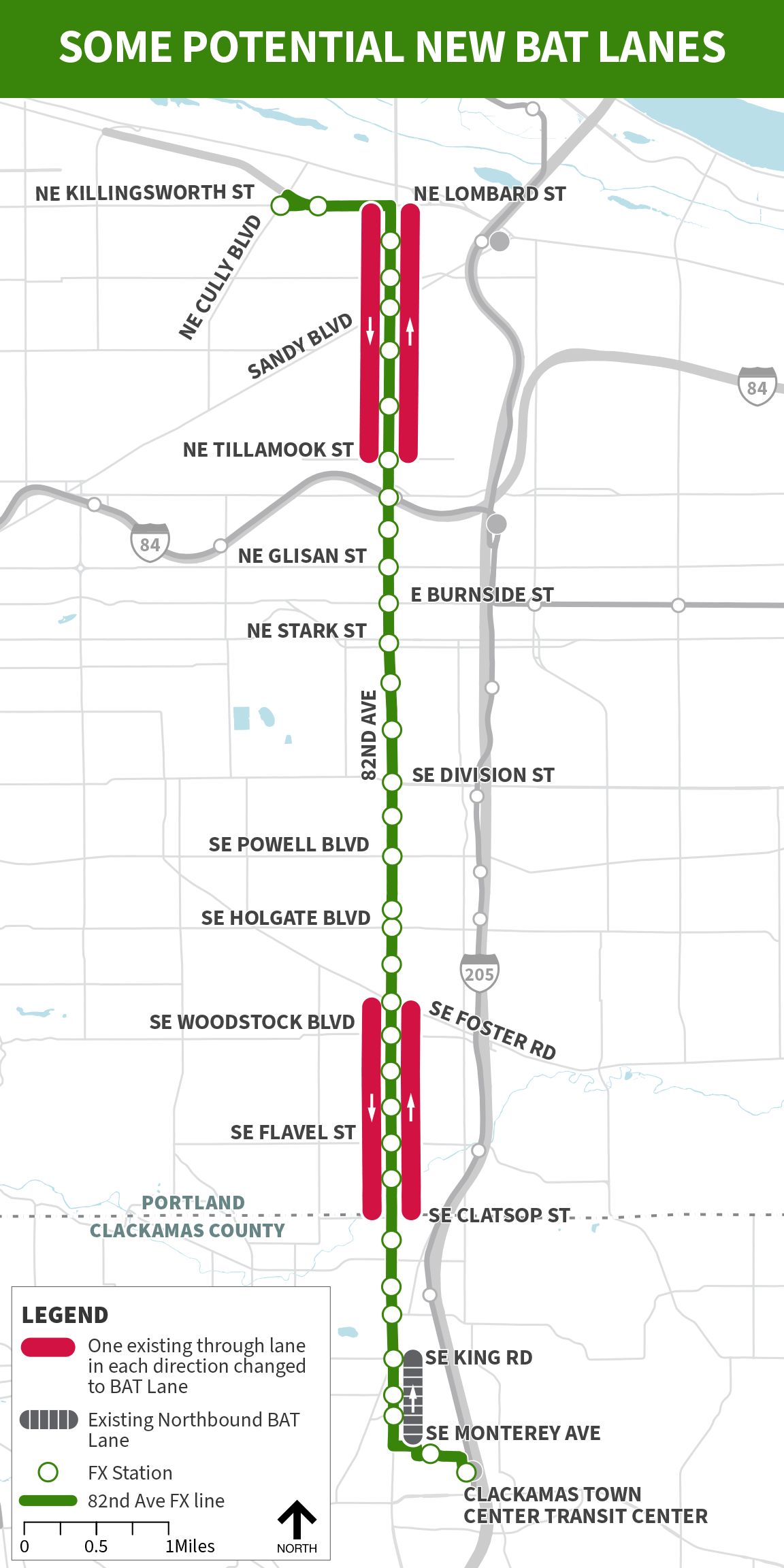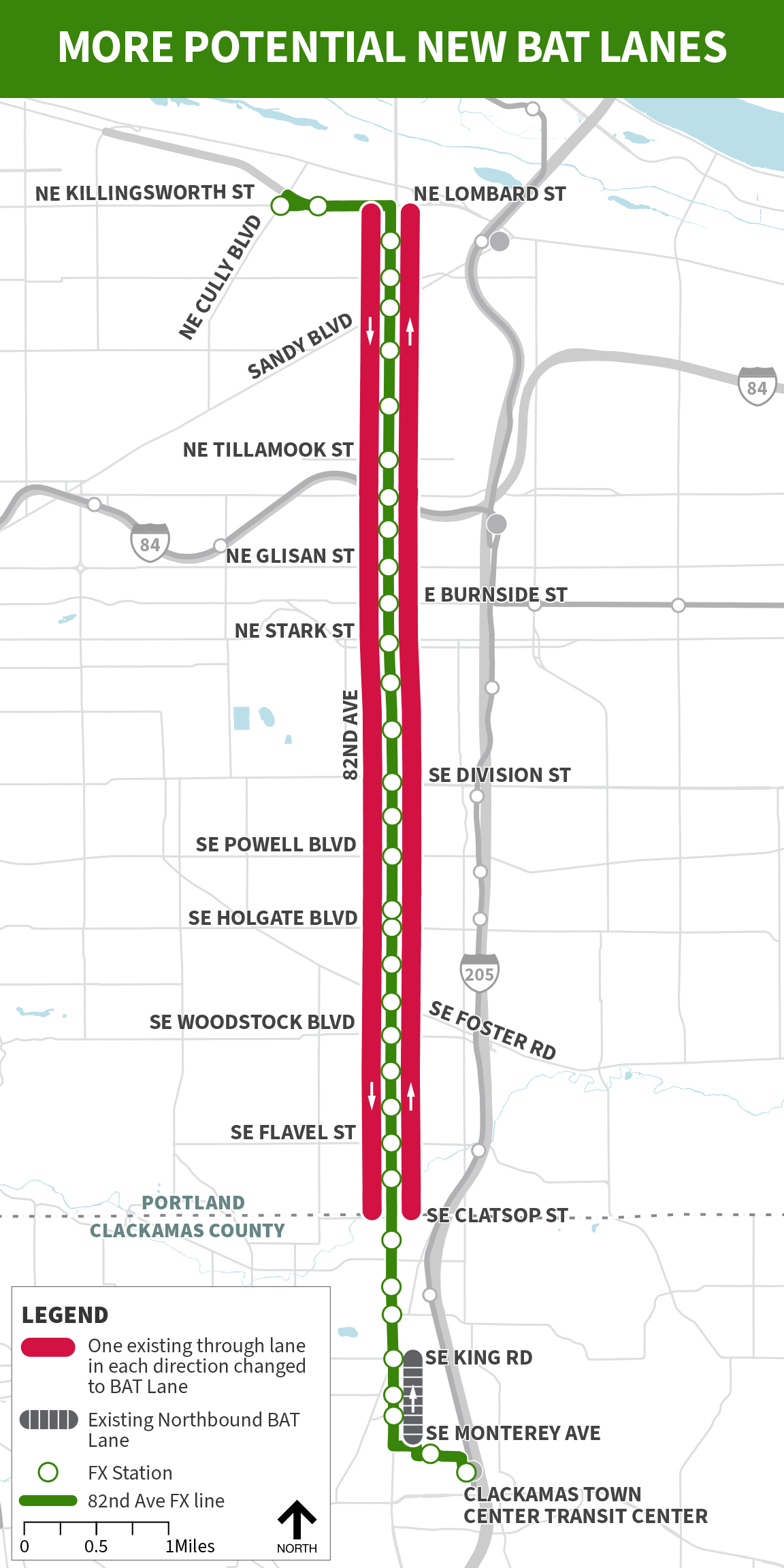
车道设计建议
82nd Avenue 中转项目将使乘坐公交车变得更快、更安全、更舒适。 除了目前的项目设计,我们还在探索更多的工具,以保证公交车在车流中行驶。这些额外工具的费用可能超过项目资金。以下是一些初步数据,说明这些工具将如何影响人们驾驶和乘坐公交的出行。
反馈期现已结束,但我们始终希望听到您的意见!请致电503-962-2150或发送电子邮件至communityaffairs@trimet.org。
当前项目设计
目前的项目设计包括一些功能,预计可将乘坐公交车的乘客的行程速度提高 20% 。这些功能包括
- 整合现有的 停靠点,在安全的人行横道附近建立更高质量的 站,并提供候车亭、照明、 实时 公交 到达信息和路边坡道
- 中转信号优先 (TSP),即通过公交和信号的沟通,为乘坐公交的人优先安排速度较快的行程。
- 更高的路缘和更长的公交全门登机,使登机更加方便快捷
反馈期现已结束。
附加工具
即使有了这些改进,随着未来交通拥堵的加剧,公交可能更难在 时刻表 上停留。 该项目正在探索更多的工具,以保持 "公交 "的运转。 这些工具的成本可能超过项目资金。
商务通道和过渡车道(BAT 车道)
- 现有的路边行车道将改为 BAT 车道,专供公交车和右转车辆通行。
- 汽车将留在内侧车道,而企业入口将从外侧车道进入,就像现在一样。
- 在大多数地方,BAT 车道将与人行道相邻,这样行人就可以靠近较少的车流。
- BAT 车道可以使乘坐公交车的人出行更快、更可靠,并为更舒适的行人环境提供支持。
- BAT 车道会使驾车者的行程变慢,并导致一些车辆改道驶入其他街道。
- 蒙特雷大道东南部和国王路之间的第 82 大道北行方向就有一条 BAT 车道。
目前正在研究东北伦巴第街和东南克拉索普街之间双向新建 BAT 车道的两种方案:一个方案有一些 BAT 车道,另一个方案有更多的 BAT 车道。下文将更详细地介绍这些方案。
拓宽交叉路口
项目团队正在研究拓宽第 82 大道三个拥堵路口附近的概念,以便为 BAT 车道腾出空间,并保留现有车道供人们驾驶。这将延长行人横穿 82 号大道的距离。
这些工具与当前的 "终点 "项目设计相比如何?
为了评估这些工具的潜在效果,我们在预计的 2029 年下午高峰时间(即项目计划开放的年份)使用了 "抽样行程"。 抽样行程覆盖东北伦巴德街和东南克拉索普街之间长达 7 英里的第 82 大道。
按照目前的项目设计,乘坐公交车的乘客完成样本行程的时间将快 8-9 分钟。驾车者的出行时间不会受到影响。
选择:部分 BAT 车道
部分最佳可行技术车道 "方案将现有车道转换为最佳可行技术车道,双向总长约 3 英里。与目前的项目设计相比,该方案将为样本行程带来以下结果:
- 公交车运行时间缩短 1-2 分钟
- 改进了 中转 的可靠性
- 改善 BAT 车道沿线行人的安全状况
- 汽车行驶时间缩短 1-2 分钟
- 增加交通分流:工作日下午高峰时段,约 15% 的司机会选择其他路线(主要是 I-205 州际公路或其他主干道)。受更多交通流量影响的社区街道可能需要改善安全状况。
- 成本:正在研究的额外工具的最低成本
选项:更多 BAT 车道
更多最佳可通行车道 "方案将现有车道改为最佳可通行车道,双向行驶约 7 英里。与目前的项目设计相比,该方案将为样本行程带来以下结果:
- 公交车运行时间缩短 3-4 分钟
- 进一步提高了 中转 的可靠性
- 改善 BAT 车道沿线行人的安全状况
- 汽车行驶时间缩短 3-4 分钟
- 增加交通分流:工作日下午高峰时段,20-25% 的司机会选择其他路线(主要是 I-205 州际公路或其他主干道)。受更多交通流量影响的社区街道可能需要改善安全状况。
- 成本:至少是 "部分 BAT 车道 "方案的两倍
方案:拓宽交叉路口
交叉口拓宽概念将拓宽第 82 大道靠近SE Powell Blvd 、霍尔盖特大道和福斯特路的几个街区,为 BAT 车道腾出空间,同时保留现有车道。 与目前的项目设计相比,该方案将为样本行程带来以下结果:
- 公交车运行时间缩短约 1 分钟
- 行人将在拓宽后的 82 号大道交叉路口穿过多达 7 条车道
- 汽车行驶时间缩短约 15 秒
- 大量购置房产:该项目需要购买整整三处房产,一些企业必须搬迁。
- 成本:是 "部分 BAT 车道 "方案的四倍多










